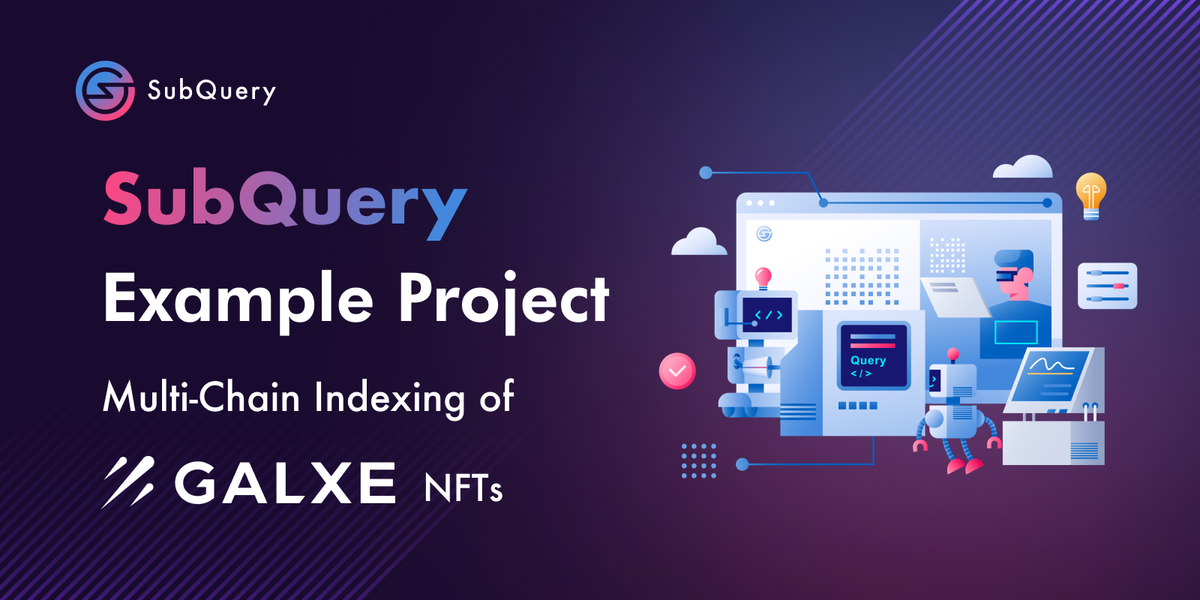The purpose of this article is to provide a detailed, step-by-step manual for establishing a multi-chain indexer compatible with Galxe, a prominent platform designed for building web3 communities.
An essential component of the Galxe platform revolves around the concept of campaigns. These campaigns serve as a collaborative system for credential infrastructure, allowing brands to enhance their web3 communities and products. Galxe effectively leverages both on-chain and off-chain credentials to assist brands and protocols in their growth hacking endeavours. Users who successfully complete campaign tasks receive on-chain proof of their achievements, which enables them to mint a Galxe NFT OAT (On-Chain Achievement Token).
This guide serves as your entry point for effectively indexing events related to Galxe NFTs, enabling users to navigate cross-chain transactions. Given that this protocol extends its functionality to multiple blockchain networks, developers aspiring to create decentralised applications that seamlessly span various chains require the capability to simultaneously index multiple blockchains. SubQuery has proactively addressed this need by introducing a groundbreaking solution known as Multi-Chain Indexing.
Example
The Galxe sample project gathers data related to the NFTs. Key resources:
Use-Cases
Once you initiate the project, you'll have the choice to launch the queries. Within this context, the following entities can be extracted:
- SpaceStation: Represents a Galxe protocol version and associated claim records, operating on a specific network.
- StarNFT: Represents a Galxe protocol's specific NFT type, operating on a particular network.
- NFT: Represents Galxe protocol's NFT with contract information, owner, campaign association, and network specification.
- Campaign: Represents a campaign within the Galxe protocol.
- ClaimRecord: Represents Galxe protocol claim records associated with NFTs and space stations, with various details and network specification.
- NFTMintTransaction: Represents transactions related to NFT minting in the Galxe protocol, including contract, sender, recipient, and network information.
First, let's create a query involving the interlinked entities:
The query above enables us to retrieve information about a specific space station version, including its associated claims, NFTs, and the relevant campaign, all across multiple chains in a single query.
Certainly, you also have the option to query individual entities. In the upcoming example, we'll query "claimRecords" to track a user's activity on the chain after successfully fulfilling campaign tasks:
Considering that this project spans multiple blockchains, we have the capability to query the project's metadata. This can be accomplished using the following query:
Furthermore, when you combine multi-chain capabilities with aggregations, it opens up significant possibilities for cross-chain analysis without a need to exit the GraphQL interface to gain insights into specific subject matters.
About Galxe
Galxe's objective is to establish an inclusive and cooperative credential data network accessible to all Web3 developers. Credentials hold significant value due to their diverse applications, ranging from credit score calculations to audience targeting and community contributor rewards. As Web3 and DAOs advance, a surge of behavioural data will be generated by new users.
Galxe offers the infrastructure for community members to curate and contribute digital credentials to their data network. This infrastructure accommodates the curation of credentials from various data sources. When it comes to on-chain credentials, curators can contribute through subgraph queries or static snapshots. For off-chain credentials, integration with platforms like Snapshot.org, Twitter, and Github is in place.
About SubQuery
SubQuery is a leading blockchain data indexer that provides developers with fast, flexible, universal, and decentralised APIs for web3 projects. We empower developers from over 110+ ecosystems including Ethereum, Polygon, Polkadot, Cosmos, Algorand, NEAR, and Avalanche with rich indexed data to allow them to build intuitive and immersive decentralised applications. This blockchain developer toolkit enables developers to focus on their core use case and front-end without wasting time building a custom backend for data processing activities. In the near future, the SubQuery Network will replicate this scalable and reliable solution in a completely decentralised manner.
Linktree | Website | Discord | Telegram | Twitter | Matrix | LinkedIn | YouTube

